Long exposure of Antares blasting off from Wallops Island carrying the OA-5 mission. Photo Credit: Cole Ippoliti / AmericaSpace On Monday night, Orbital ATK’s Antares rocket blasted off from Wallops Island Orb-3 launch accident
This Antares was the first to fly in the 230 configuration, with a first stage powered by a pair of NPO Energomash RD-181 engines test fired on the ground
This was also the first successful flight of the larger Castor 30XL upper stage, which was to be used on the failed Orb-3 mission in the Antares 130 configuration. The OA-5 mission is the first time Orbital ATK’s enhanced Cygnus spacecraft has been launched by Antares. The enhanced Cygnus flew twice on the ULA Atlas V
The highly anticipated launch was a success and Cygnus is slated to arrive at the International Space Station on Sunday.
All photos credit Elliot Severn and Cole Ippoliti for AmericaSpace, all rights reserved, please contact for use.
.
Photo Credit: Cole Ippoliti / AmericaSpace Photo Credit: Cole Ippoliti / AmericaSpace
Photo Credit: Elliot Severn / AmericaSpace
Photo Credit: Elliot Severn / AmericaSpace
Photo Credit: Cole Ippoliti / AmericaSpace
Photo Credit: Elliot Severn / AmericaSpace
Photo Credit: Elliot Severn / AmericaSpace
Photo Credit: Cole Ippoliti / AmericaSpace
Photo Credit: Elliot Severn / AmericaSpace
Photo Credit: Elliot Severn / AmericaSpace
Photo Credit: Cole Ippoliti / AmericaSpace
Photo Credit: Cole Ippoliti
Photo Credit: Elliot Severn / AmericaSpace
Video Credit: Elliot Severn / AmericaSpace
Video Credit: Elliot Severn / AmericaSpace
.Want to keep up-to-date with all things space? Be sure to “Like” AmericaSpace on Facebook and follow us on Twitter: @AmericaSpace
.
Missions »
ISS »
COTS »
CYGNUS »
Posts associated with the ISS missions After Daylong Delay, NG-20 Cygnus Launches, Heads to Space Station
After Four-Month-Plus Stay, NG-19 Cygnus Cargo Ship Leaves Space Station
Last Antares 200-Series Rocket Launches, Delivers NG-19 Cygnus to Space Station
Northrop Grumman Prepares for Final Antares 230 Launch Tomorrow
Northrop Grumman Launches NG-18 Cygnus to Space Station, Honors Pioneer Sally Ride
NG-17 Cygnus Departs Space Station, Wraps Up Four-Month Stay
CRS-24 Dragon Launches, Heads to Space Station
NG-16 Cygnus Departs Space Station, Heads for Re-entry
NG-16 Cygnus Launches, Honors Challenger Veteran, Heads to Space Station
NG-16 Cygnus Prepares for Tuesday Launch, as OFT-2 Starliner Delay Lengthens
Next Cygnus Cargo Ship Named for Challenger Hero Ellison Onizuka
Station Crew Readies for Tuesday Cygnus Departure, NG-16 Launch NET 10 August
As CRS-22 Readies for Thursday Launch, SpaceX, AxiomSpace Plan for Four Missions Through 2023
SpaceX, ULA Primed for Five Launches in June, CRS-22 Dragon Set to Fly Thursday
Crew-2 Launches, Takes Aim on Space Station for Saturday Arrival
SpaceX Static-Fires Falcon 9 for Crew-2, As Boeing OFT-2 Mission Aims for Aug-Sept Launch
Crew-2 Astronauts Discuss Upcoming Mission, Eye 20 April Launch to ISS
Northrop Grumman Green-Lights Two More Cygnus Missions, As NG-15 Arrives at Space Station
ISS-Bound NG-15 Cygnus Honors ‘Hidden Figure’ Katherine Johnson
Multi-National Crew-2 Gears Up for 20 April Launch to Space Station
NG-14 Cygnus Departs Space Station, Two Weeks of Autonomous Fire Safety, Tech Experiments Ahead
NG-14 Cygnus Arrives at Space Station, Ahead of Expedition 64 Launch Next Week
Antares Breaks Launch Week Curse, as SpaceX Suffers Last-Second Scrub
Scrub Week Continues, Antares Launch Now NET Friday Night
Next NASA, SpaceX Crew Launch Set for Oct 31 with ‘Crew-1’
NG-14 Cygnus Readies for Tuesday Night Launch From Wallops
Next Cygnus Cargo Ship Named for Columbia Astronaut Kalpana Chawla
Second-Heaviest Cygnus, Antares Booster Processing Ramps Up for NG-14 Mission
Next Cygnus Supply Mission Targets 29 Sept Launch to Space Station
Rubins, Crewmates Discuss Upcoming Space Station Mission
Demo-2 Docks at Space Station, Expedition 63 Expands to Five Crew
T-1 Day: NASA, SpaceX Ready to Bring Human Spaceflight Back to America (Part 2)
NASA, SpaceX Ready to Return Human Spaceflight to American Soil (Part 1)
Astronauts Arrive in Florida for Launch Next Week on SpaceX Demo-2 Mission
Starlink Mission Slips to NET June; Demo-2 Next Up for SpaceX
Cygnus Departs Space Station; 2 Weeks of SAFFIRE Experiments Planned
NASA, SpaceX Preview First Crewed Dragon Mission, Set for May 27 Launch
NG-13 Cygnus Begins ISS Chase with 8,000 Pounds of Cargo for Space Station
Antares to Launch NG-13 ISS Resupply Tonight from VA, Spacecraft Named After Robert Lawrence
SpaceX Crew Dragon Inflight Abort Test Video
Antares Ready for Saturday Launch from Virginia to Resupply ISS (NG-12)
Antares to Launch NG-11 Cygnus from VA April 17, Honors Apollo 1 Hero Roger Chaffee
Crew Dragon Kicks Off Demo-1 Mission to Return Human Spaceflight to American Shores
Decade-Long Crew Dragon Program Stands Ready for Maiden Mission (Part 2)
Decade-Long Crew Dragon Program Stands Ready for Maiden Mission (Part 1)
NASA Clears SpaceX to Launch Crew Dragon ‘Demo-1’ on March 2
First Crew Dragon Demo On Track for Late-Night Launch March 2
Good Test Fire for First Crew Dragon Mission Paves Way to Launch NET Late February
Cygnus Arrives at Space Station with 7,400 Pounds of Fresh Supplies and Science
Antares Launches Ninth Cygnus Cargo Delivery Mission to Space Station
Posts associated with the COTS missions After Daylong Delay, NG-20 Cygnus Launches, Heads to Space Station
After Four-Month-Plus Stay, NG-19 Cygnus Cargo Ship Leaves Space Station
Last Antares 200-Series Rocket Launches, Delivers NG-19 Cygnus to Space Station
Northrop Grumman Prepares for Final Antares 230 Launch Tomorrow
Northrop Grumman Launches NG-18 Cygnus to Space Station, Honors Pioneer Sally Ride
NG-17 Cygnus Departs Space Station, Wraps Up Four-Month Stay
CRS-24 Dragon Launches, Heads to Space Station
NG-16 Cygnus Departs Space Station, Heads for Re-entry
NG-16 Cygnus Launches, Honors Challenger Veteran, Heads to Space Station
NG-16 Cygnus Prepares for Tuesday Launch, as OFT-2 Starliner Delay Lengthens
Next Cygnus Cargo Ship Named for Challenger Hero Ellison Onizuka
Station Crew Readies for Tuesday Cygnus Departure, NG-16 Launch NET 10 August
As CRS-22 Readies for Thursday Launch, SpaceX, AxiomSpace Plan for Four Missions Through 2023
SpaceX, ULA Primed for Five Launches in June, CRS-22 Dragon Set to Fly Thursday
Northrop Grumman Green-Lights Two More Cygnus Missions, As NG-15 Arrives at Space Station
ISS-Bound NG-15 Cygnus Honors ‘Hidden Figure’ Katherine Johnson
NG-14 Cygnus Departs Space Station, Two Weeks of Autonomous Fire Safety, Tech Experiments Ahead
NG-14 Cygnus Arrives at Space Station, Ahead of Expedition 64 Launch Next Week
Antares Breaks Launch Week Curse, as SpaceX Suffers Last-Second Scrub
Scrub Week Continues, Antares Launch Now NET Friday Night
NG-14 Cygnus Readies for Tuesday Night Launch From Wallops
Next Cygnus Cargo Ship Named for Columbia Astronaut Kalpana Chawla
Second-Heaviest Cygnus, Antares Booster Processing Ramps Up for NG-14 Mission
Next Cygnus Supply Mission Targets 29 Sept Launch to Space Station
Cygnus Departs Space Station; 2 Weeks of SAFFIRE Experiments Planned
NG-13 Cygnus Begins ISS Chase with 8,000 Pounds of Cargo for Space Station
Antares to Launch NG-13 ISS Resupply Tonight from VA, Spacecraft Named After Robert Lawrence
Antares Ready for Saturday Launch from Virginia to Resupply ISS (NG-12)
Antares to Launch NG-11 Cygnus from VA April 17, Honors Apollo 1 Hero Roger Chaffee
Cygnus Arrives at Space Station with 7,400 Pounds of Fresh Supplies and Science
Antares Launches Ninth Cygnus Cargo Delivery Mission to Space Station
SpaceX Launches Fourth Dragon of 2017, Nails 20th Landing with CRS-13 Mission
SLC-40 Ready for Return to Flight, With Fourth ISS-Bound Dragon of 2017
SpaceX Says New Improved SLC-40 Ready for Launches Again Following CRS-13 Test Fire
Orbital ATK Honors Veterans With Rousing Launch of OA-8 Cygnus to Space Station
SpaceX Launches Third Dragon of 2017 to Space Station, Lands 6th Rocket on LZ-1
Storms Threaten Post-Landing Securing of Falcon 9 First Stage on Monday
UPDATE: Good Falcon 9 Test Fire as SpaceX Aims for Aug 14 CRS-12 Launch
PHOTOS: SpaceX CRS-11 Launch and Landing
First Reusable Dragon Cargo Mission Launches Science and Supplies to Space Station
‘Godspeed, John Glenn’: Cygnus Soars Atop Atlas-V on Voyage to Space Station
John Glenn to Return to Space ‘In Spirit’ on ISS-Bound OA-7 Cygnus Cargo Mission
NASA Outlines Science Payloads, Ahead of Next ISS-Bound Cygnus Cargo Mission
SpaceX Soars from 39A for First Time, Delivers Dragon to Space & Returns Falcon to Earth
Pad 39A Set for First Post-Shuttle Launch, as SpaceX Readies for Weekend Return to Space Station
NASA Outlines Science Heading to Space Station Aboard CRS-10 Dragon
Through the Lens: Antares Returns to Flight on OA-5 Mission for NASA
Antares Returns to Flight, Delivering OA-5 Cygnus to Space Station
SpaceX Nails Launch and Landing Again, Dragon CRS-9 Now En Route to Space Station
Critical Science, Commercial Crew Hardware Headed to Space Station Aboard CRS-9 Dragon
Missions »
ISS »
COTS »
CYGNUS »
OA-5 »
Posts associated with the ISS missions After Daylong Delay, NG-20 Cygnus Launches, Heads to Space Station
After Four-Month-Plus Stay, NG-19 Cygnus Cargo Ship Leaves Space Station
Last Antares 200-Series Rocket Launches, Delivers NG-19 Cygnus to Space Station
Northrop Grumman Prepares for Final Antares 230 Launch Tomorrow
Northrop Grumman Launches NG-18 Cygnus to Space Station, Honors Pioneer Sally Ride
NG-17 Cygnus Departs Space Station, Wraps Up Four-Month Stay
CRS-24 Dragon Launches, Heads to Space Station
NG-16 Cygnus Departs Space Station, Heads for Re-entry
NG-16 Cygnus Launches, Honors Challenger Veteran, Heads to Space Station
NG-16 Cygnus Prepares for Tuesday Launch, as OFT-2 Starliner Delay Lengthens
Next Cygnus Cargo Ship Named for Challenger Hero Ellison Onizuka
Station Crew Readies for Tuesday Cygnus Departure, NG-16 Launch NET 10 August
As CRS-22 Readies for Thursday Launch, SpaceX, AxiomSpace Plan for Four Missions Through 2023
SpaceX, ULA Primed for Five Launches in June, CRS-22 Dragon Set to Fly Thursday
Crew-2 Launches, Takes Aim on Space Station for Saturday Arrival
SpaceX Static-Fires Falcon 9 for Crew-2, As Boeing OFT-2 Mission Aims for Aug-Sept Launch
Crew-2 Astronauts Discuss Upcoming Mission, Eye 20 April Launch to ISS
Northrop Grumman Green-Lights Two More Cygnus Missions, As NG-15 Arrives at Space Station
ISS-Bound NG-15 Cygnus Honors ‘Hidden Figure’ Katherine Johnson
Multi-National Crew-2 Gears Up for 20 April Launch to Space Station
NG-14 Cygnus Departs Space Station, Two Weeks of Autonomous Fire Safety, Tech Experiments Ahead
NG-14 Cygnus Arrives at Space Station, Ahead of Expedition 64 Launch Next Week
Antares Breaks Launch Week Curse, as SpaceX Suffers Last-Second Scrub
Scrub Week Continues, Antares Launch Now NET Friday Night
Next NASA, SpaceX Crew Launch Set for Oct 31 with ‘Crew-1’
NG-14 Cygnus Readies for Tuesday Night Launch From Wallops
Next Cygnus Cargo Ship Named for Columbia Astronaut Kalpana Chawla
Second-Heaviest Cygnus, Antares Booster Processing Ramps Up for NG-14 Mission
Next Cygnus Supply Mission Targets 29 Sept Launch to Space Station
Rubins, Crewmates Discuss Upcoming Space Station Mission
Demo-2 Docks at Space Station, Expedition 63 Expands to Five Crew
T-1 Day: NASA, SpaceX Ready to Bring Human Spaceflight Back to America (Part 2)
NASA, SpaceX Ready to Return Human Spaceflight to American Soil (Part 1)
Astronauts Arrive in Florida for Launch Next Week on SpaceX Demo-2 Mission
Starlink Mission Slips to NET June; Demo-2 Next Up for SpaceX
Cygnus Departs Space Station; 2 Weeks of SAFFIRE Experiments Planned
NASA, SpaceX Preview First Crewed Dragon Mission, Set for May 27 Launch
NG-13 Cygnus Begins ISS Chase with 8,000 Pounds of Cargo for Space Station
Antares to Launch NG-13 ISS Resupply Tonight from VA, Spacecraft Named After Robert Lawrence
SpaceX Crew Dragon Inflight Abort Test Video
Antares Ready for Saturday Launch from Virginia to Resupply ISS (NG-12)
Antares to Launch NG-11 Cygnus from VA April 17, Honors Apollo 1 Hero Roger Chaffee
Crew Dragon Kicks Off Demo-1 Mission to Return Human Spaceflight to American Shores
Decade-Long Crew Dragon Program Stands Ready for Maiden Mission (Part 2)
Decade-Long Crew Dragon Program Stands Ready for Maiden Mission (Part 1)
NASA Clears SpaceX to Launch Crew Dragon ‘Demo-1’ on March 2
First Crew Dragon Demo On Track for Late-Night Launch March 2
Good Test Fire for First Crew Dragon Mission Paves Way to Launch NET Late February
Cygnus Arrives at Space Station with 7,400 Pounds of Fresh Supplies and Science
Antares Launches Ninth Cygnus Cargo Delivery Mission to Space Station
Posts associated with the COTS missions After Daylong Delay, NG-20 Cygnus Launches, Heads to Space Station
After Four-Month-Plus Stay, NG-19 Cygnus Cargo Ship Leaves Space Station
Last Antares 200-Series Rocket Launches, Delivers NG-19 Cygnus to Space Station
Northrop Grumman Prepares for Final Antares 230 Launch Tomorrow
Northrop Grumman Launches NG-18 Cygnus to Space Station, Honors Pioneer Sally Ride
NG-17 Cygnus Departs Space Station, Wraps Up Four-Month Stay
CRS-24 Dragon Launches, Heads to Space Station
NG-16 Cygnus Departs Space Station, Heads for Re-entry
NG-16 Cygnus Launches, Honors Challenger Veteran, Heads to Space Station
NG-16 Cygnus Prepares for Tuesday Launch, as OFT-2 Starliner Delay Lengthens
Next Cygnus Cargo Ship Named for Challenger Hero Ellison Onizuka
Station Crew Readies for Tuesday Cygnus Departure, NG-16 Launch NET 10 August
As CRS-22 Readies for Thursday Launch, SpaceX, AxiomSpace Plan for Four Missions Through 2023
SpaceX, ULA Primed for Five Launches in June, CRS-22 Dragon Set to Fly Thursday
Northrop Grumman Green-Lights Two More Cygnus Missions, As NG-15 Arrives at Space Station
ISS-Bound NG-15 Cygnus Honors ‘Hidden Figure’ Katherine Johnson
NG-14 Cygnus Departs Space Station, Two Weeks of Autonomous Fire Safety, Tech Experiments Ahead
NG-14 Cygnus Arrives at Space Station, Ahead of Expedition 64 Launch Next Week
Antares Breaks Launch Week Curse, as SpaceX Suffers Last-Second Scrub
Scrub Week Continues, Antares Launch Now NET Friday Night
NG-14 Cygnus Readies for Tuesday Night Launch From Wallops
Next Cygnus Cargo Ship Named for Columbia Astronaut Kalpana Chawla
Second-Heaviest Cygnus, Antares Booster Processing Ramps Up for NG-14 Mission
Next Cygnus Supply Mission Targets 29 Sept Launch to Space Station
Cygnus Departs Space Station; 2 Weeks of SAFFIRE Experiments Planned
NG-13 Cygnus Begins ISS Chase with 8,000 Pounds of Cargo for Space Station
Antares to Launch NG-13 ISS Resupply Tonight from VA, Spacecraft Named After Robert Lawrence
Antares Ready for Saturday Launch from Virginia to Resupply ISS (NG-12)
Antares to Launch NG-11 Cygnus from VA April 17, Honors Apollo 1 Hero Roger Chaffee
Cygnus Arrives at Space Station with 7,400 Pounds of Fresh Supplies and Science
Antares Launches Ninth Cygnus Cargo Delivery Mission to Space Station
SpaceX Launches Fourth Dragon of 2017, Nails 20th Landing with CRS-13 Mission
SLC-40 Ready for Return to Flight, With Fourth ISS-Bound Dragon of 2017
SpaceX Says New Improved SLC-40 Ready for Launches Again Following CRS-13 Test Fire
Orbital ATK Honors Veterans With Rousing Launch of OA-8 Cygnus to Space Station
SpaceX Launches Third Dragon of 2017 to Space Station, Lands 6th Rocket on LZ-1
Storms Threaten Post-Landing Securing of Falcon 9 First Stage on Monday
UPDATE: Good Falcon 9 Test Fire as SpaceX Aims for Aug 14 CRS-12 Launch
PHOTOS: SpaceX CRS-11 Launch and Landing
First Reusable Dragon Cargo Mission Launches Science and Supplies to Space Station
‘Godspeed, John Glenn’: Cygnus Soars Atop Atlas-V on Voyage to Space Station
John Glenn to Return to Space ‘In Spirit’ on ISS-Bound OA-7 Cygnus Cargo Mission
NASA Outlines Science Payloads, Ahead of Next ISS-Bound Cygnus Cargo Mission
SpaceX Soars from 39A for First Time, Delivers Dragon to Space & Returns Falcon to Earth
Pad 39A Set for First Post-Shuttle Launch, as SpaceX Readies for Weekend Return to Space Station
NASA Outlines Science Heading to Space Station Aboard CRS-10 Dragon
Through the Lens: Antares Returns to Flight on OA-5 Mission for NASA
Antares Returns to Flight, Delivering OA-5 Cygnus to Space Station
SpaceX Nails Launch and Landing Again, Dragon CRS-9 Now En Route to Space Station
Critical Science, Commercial Crew Hardware Headed to Space Station Aboard CRS-9 Dragon
Posts associated with the CYGNUS missions After Daylong Delay, NG-20 Cygnus Launches, Heads to Space Station
After Four-Month-Plus Stay, NG-19 Cygnus Cargo Ship Leaves Space Station
Last Antares 200-Series Rocket Launches, Delivers NG-19 Cygnus to Space Station
Northrop Grumman Prepares for Final Antares 230 Launch Tomorrow
Northrop Grumman Launches NG-18 Cygnus to Space Station, Honors Pioneer Sally Ride
NG-17 Cygnus Departs Space Station, Wraps Up Four-Month Stay
NG-16 Cygnus Departs Space Station, Heads for Re-entry
NG-16 Cygnus Launches, Honors Challenger Veteran, Heads to Space Station
NG-16 Cygnus Prepares for Tuesday Launch, as OFT-2 Starliner Delay Lengthens
Next Cygnus Cargo Ship Named for Challenger Hero Ellison Onizuka
Station Crew Readies for Tuesday Cygnus Departure, NG-16 Launch NET 10 August
Northrop Grumman Green-Lights Two More Cygnus Missions, As NG-15 Arrives at Space Station
ISS-Bound NG-15 Cygnus Honors ‘Hidden Figure’ Katherine Johnson
NG-14 Cygnus Departs Space Station, Two Weeks of Autonomous Fire Safety, Tech Experiments Ahead
NG-14 Cygnus Arrives at Space Station, Ahead of Expedition 64 Launch Next Week
Antares Breaks Launch Week Curse, as SpaceX Suffers Last-Second Scrub
Scrub Week Continues, Antares Launch Now NET Friday Night
NG-14 Cygnus Readies for Tuesday Night Launch From Wallops
Next Cygnus Cargo Ship Named for Columbia Astronaut Kalpana Chawla
Second-Heaviest Cygnus, Antares Booster Processing Ramps Up for NG-14 Mission
Next Cygnus Supply Mission Targets 29 Sept Launch to Space Station
Cygnus Departs Space Station; 2 Weeks of SAFFIRE Experiments Planned
NG-13 Cygnus Begins ISS Chase with 8,000 Pounds of Cargo for Space Station
Antares to Launch NG-13 ISS Resupply Tonight from VA, Spacecraft Named After Robert Lawrence
Antares Ready for Saturday Launch from Virginia to Resupply ISS (NG-12)
Antares to Launch NG-11 Cygnus from VA April 17, Honors Apollo 1 Hero Roger Chaffee
Cygnus Arrives at Space Station with 7,400 Pounds of Fresh Supplies and Science
Antares Launches Ninth Cygnus Cargo Delivery Mission to Space Station
Orbital ATK Honors Veterans With Rousing Launch of OA-8 Cygnus to Space Station
‘Godspeed, John Glenn’: Cygnus Soars Atop Atlas-V on Voyage to Space Station
John Glenn to Return to Space ‘In Spirit’ on ISS-Bound OA-7 Cygnus Cargo Mission
NASA Outlines Science Payloads, Ahead of Next ISS-Bound Cygnus Cargo Mission
Through the Lens: Antares Returns to Flight on OA-5 Mission for NASA
Antares Returns to Flight, Delivering OA-5 Cygnus to Space Station
New Improved Antares Preparing for Test Fire Ahead of July 6 Return to Flight
A Look at the Science and Experiments Aboard Cygnus ‘Rick Husband’
A Cygnus Came A’Calling: Orbital ATK’s OA-6 Cargo Ship Arrives at Space Station
Spectacular Atlas V Launch Carries Rick Husband Back to Space
ULA Stands Ready to Deliver Second Orbital ATK Cygnus to Space Station on Tuesday Night
Columbia’s Final Commander Honored in Upcoming Cygnus Resupply Mission to ISS
Next Cygnus Cargo Ship ‘SS Rick Husband’ Ready for March 22 Night Launch to Space Station
Kelly and Kornienko’s Year-Long Mission Paves Way for Journey to Mars
One-Year Crew Prepares to Depart Space Station for Return to Earth
As OA-4 Cygnus Departs, Commercial Cargo Providers Prepare for Busy Visiting Vehicle Manifest
Kopra and Peake Primed for Friday Spacewalk
EVA Ahead for ISS Crew on 15 Jan, as Space Station Prepares for Ambitious 2016
Orbital ATK Shows Off Repaired Launch Pad and Antares Rocket Hardware for Return to Flight
‘What an Honor’: Space Station Crew Prepares for Friday Return to Earth
OA-4 Cygnus Cargo Ship Arrives at Space Station, Ahead of Soyuz TMA-17M Crew Departure
A Look at the Science and Experiments Flying Aboard Cygnus ‘Deke Slayton II’ to ISS
Like this: Like Loading...
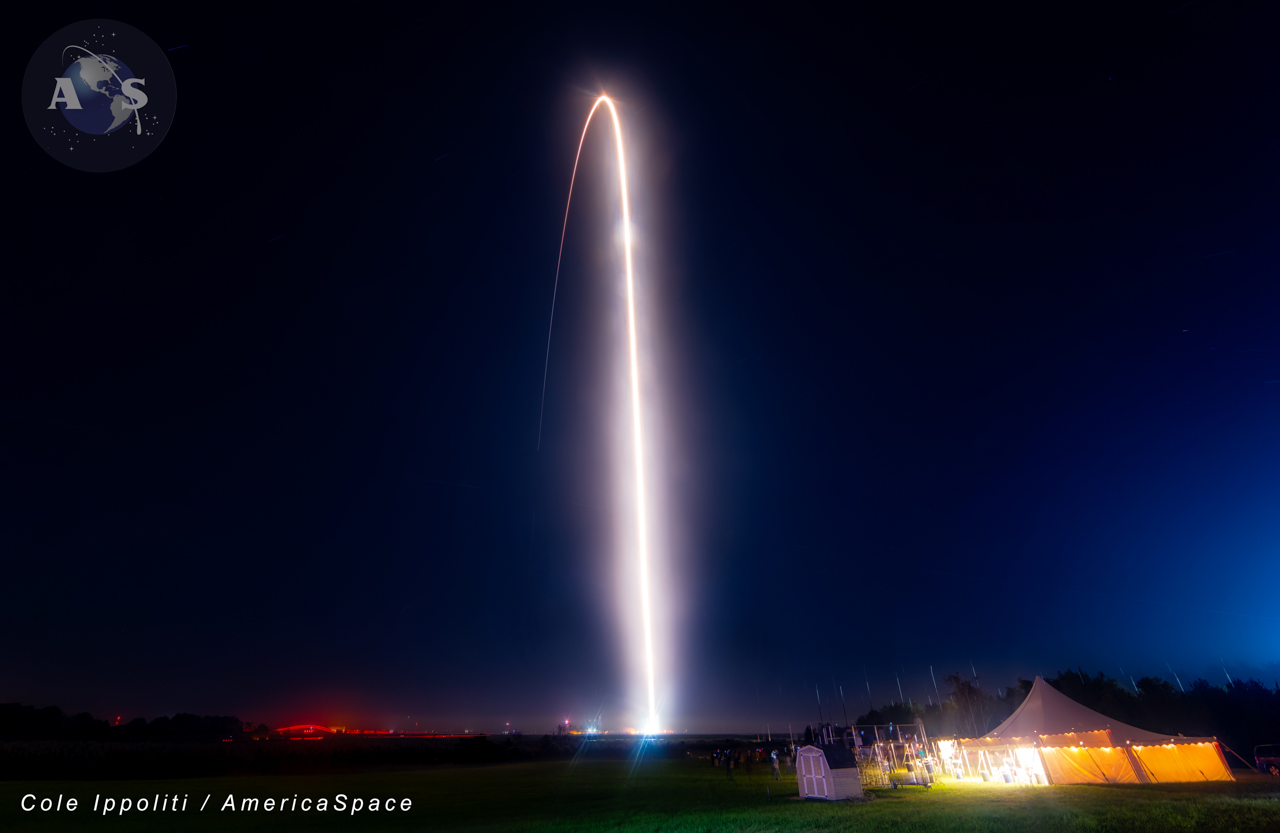
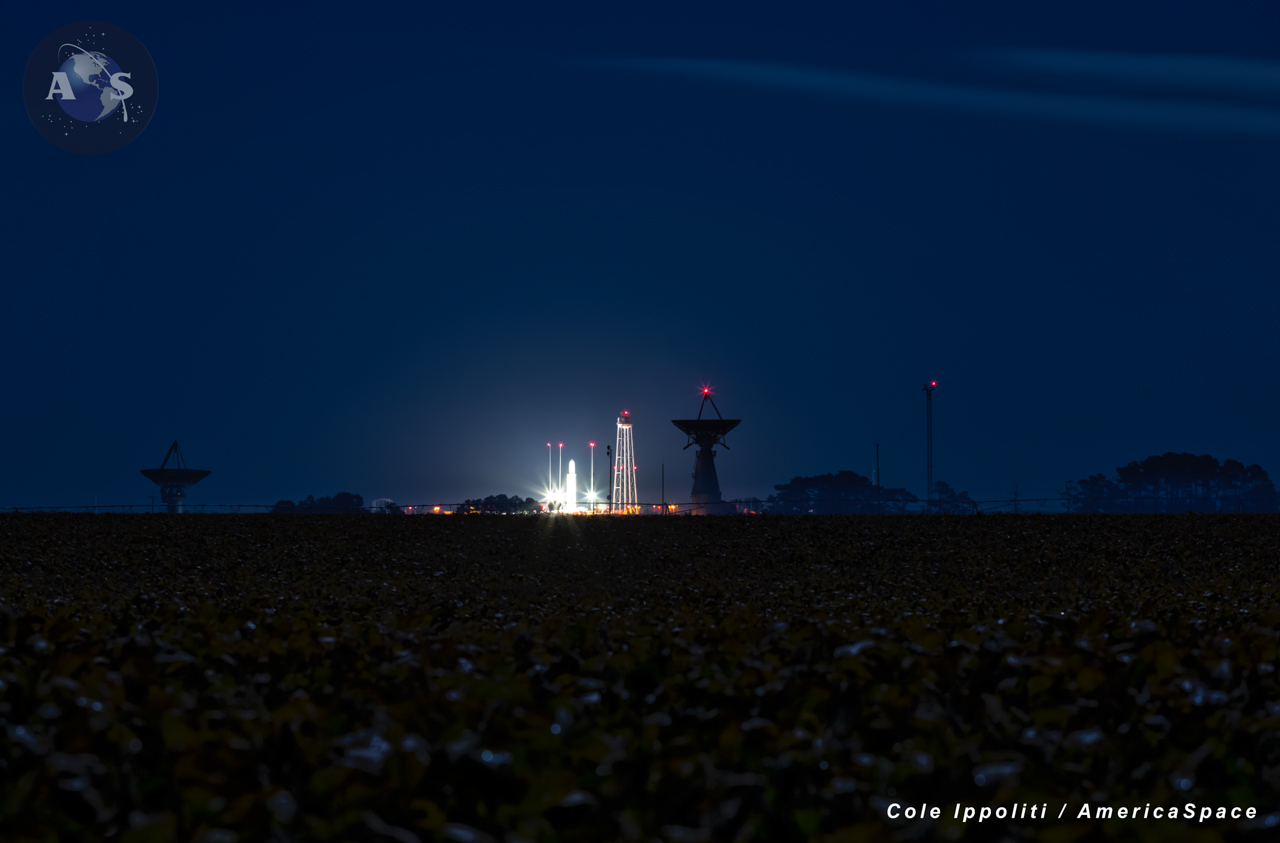
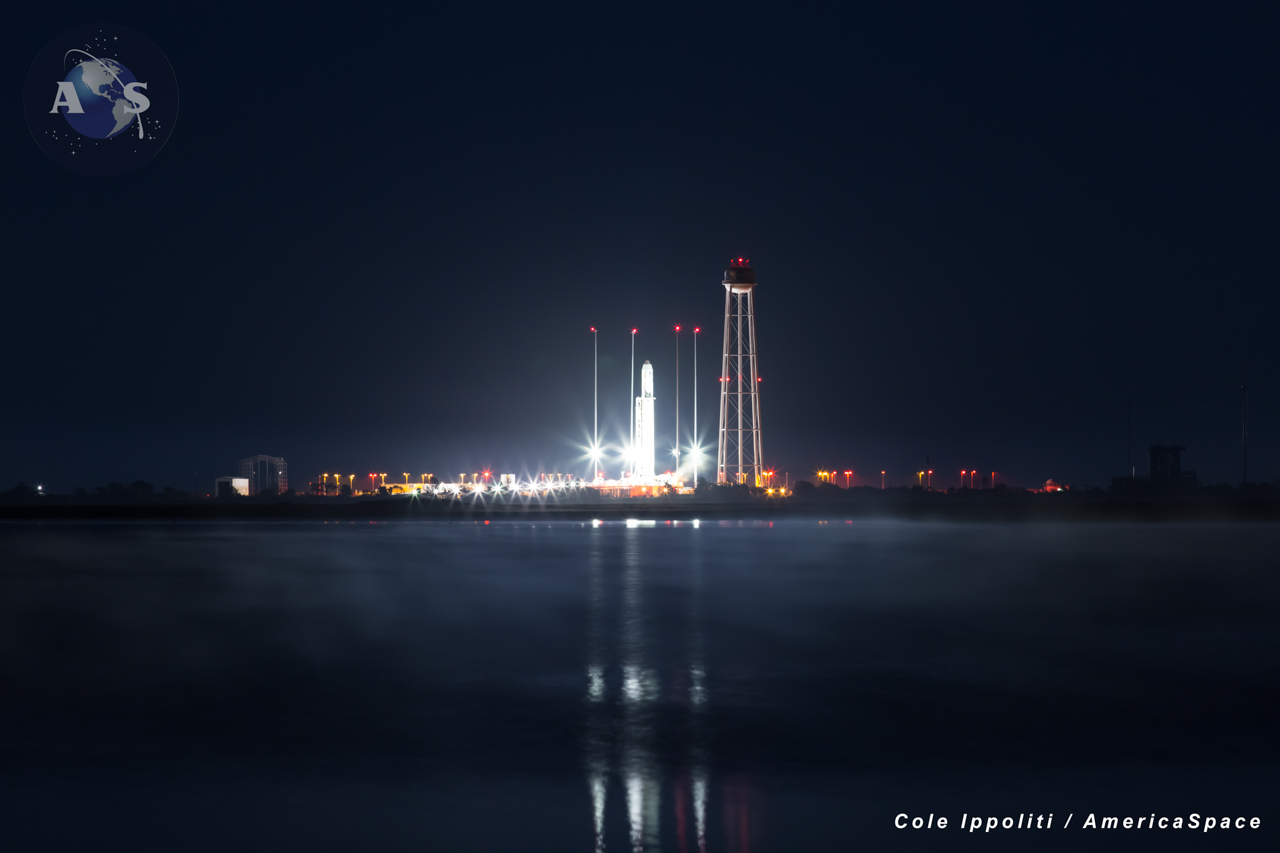
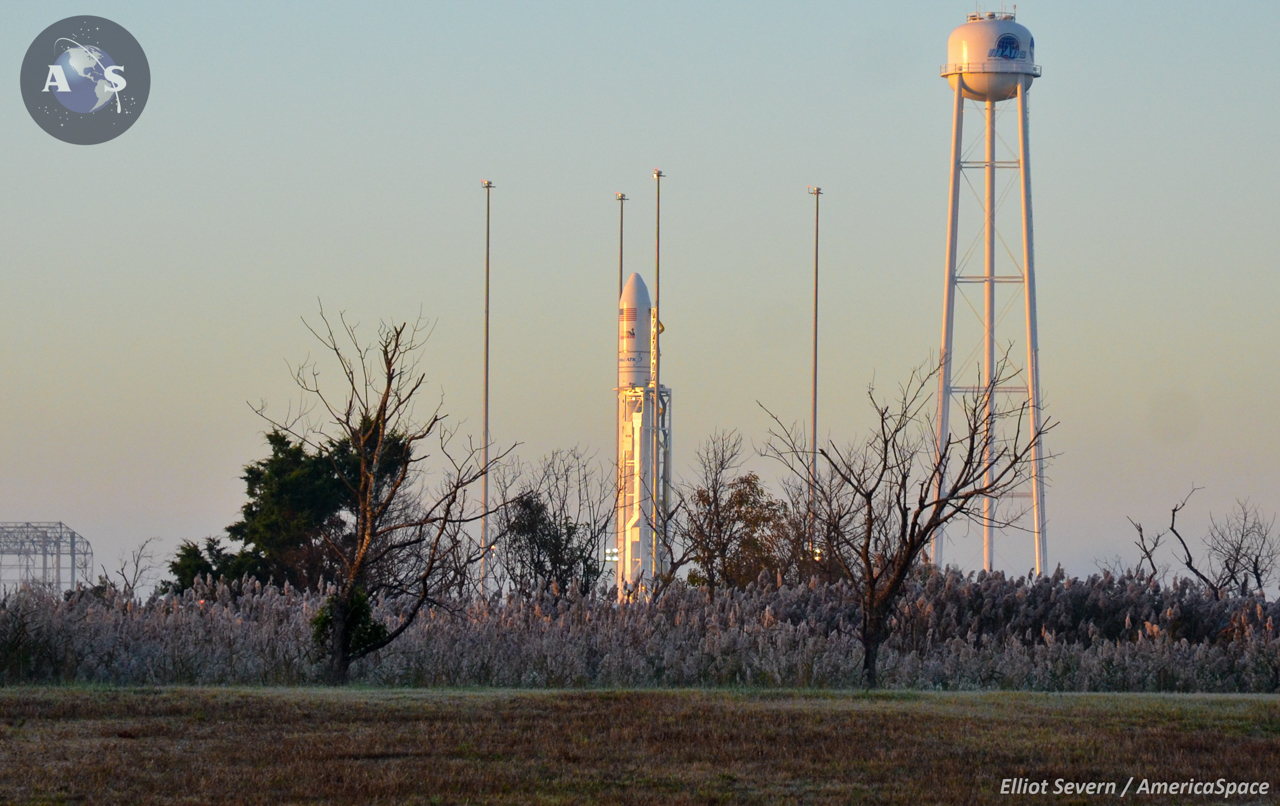
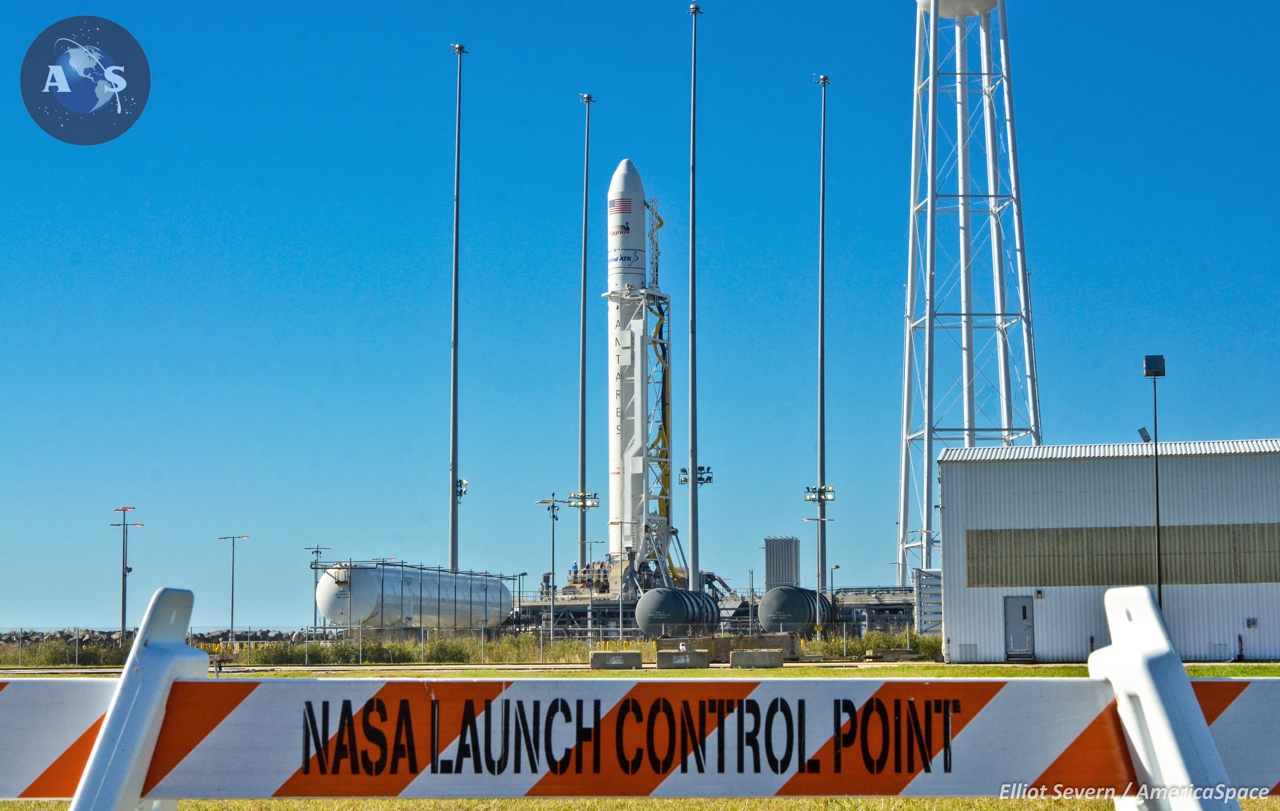
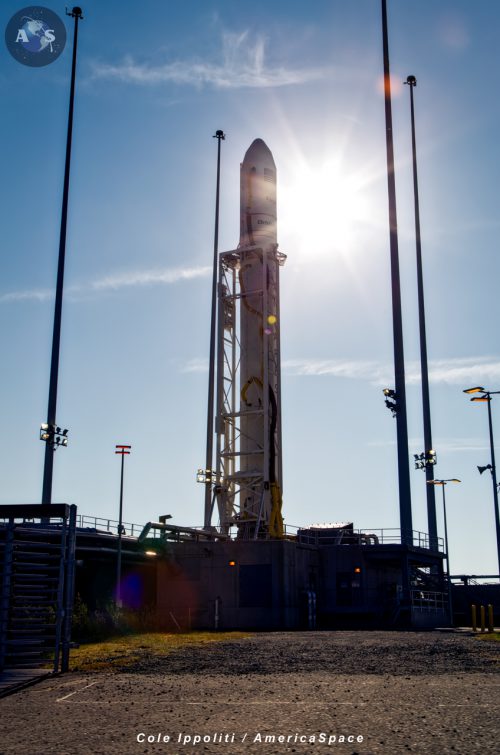
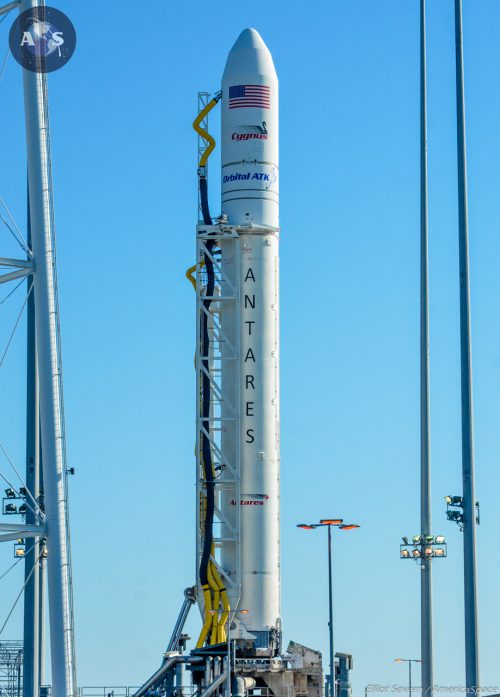
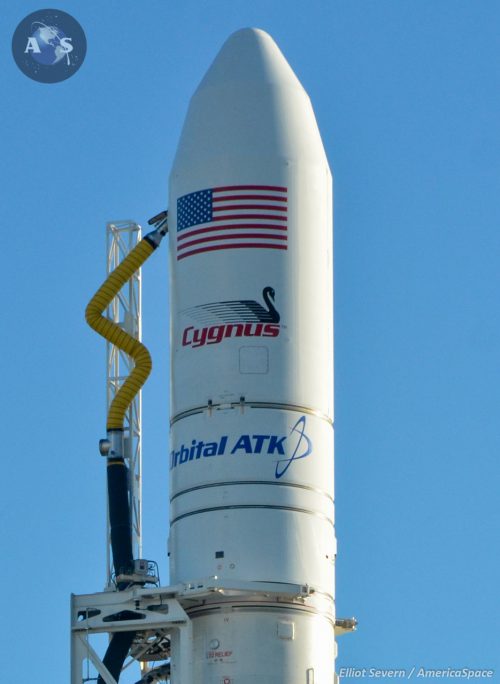
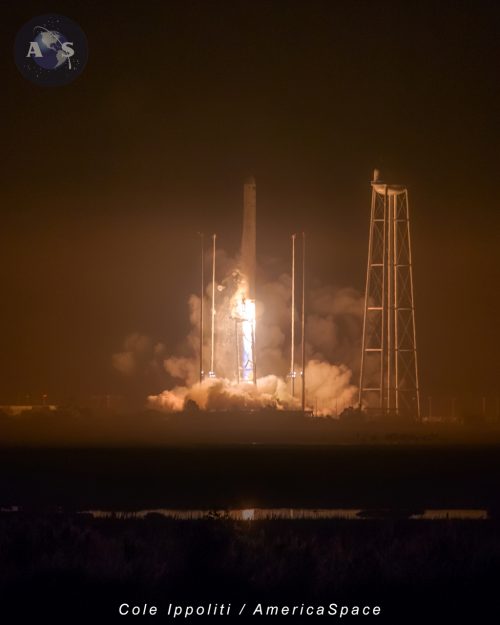
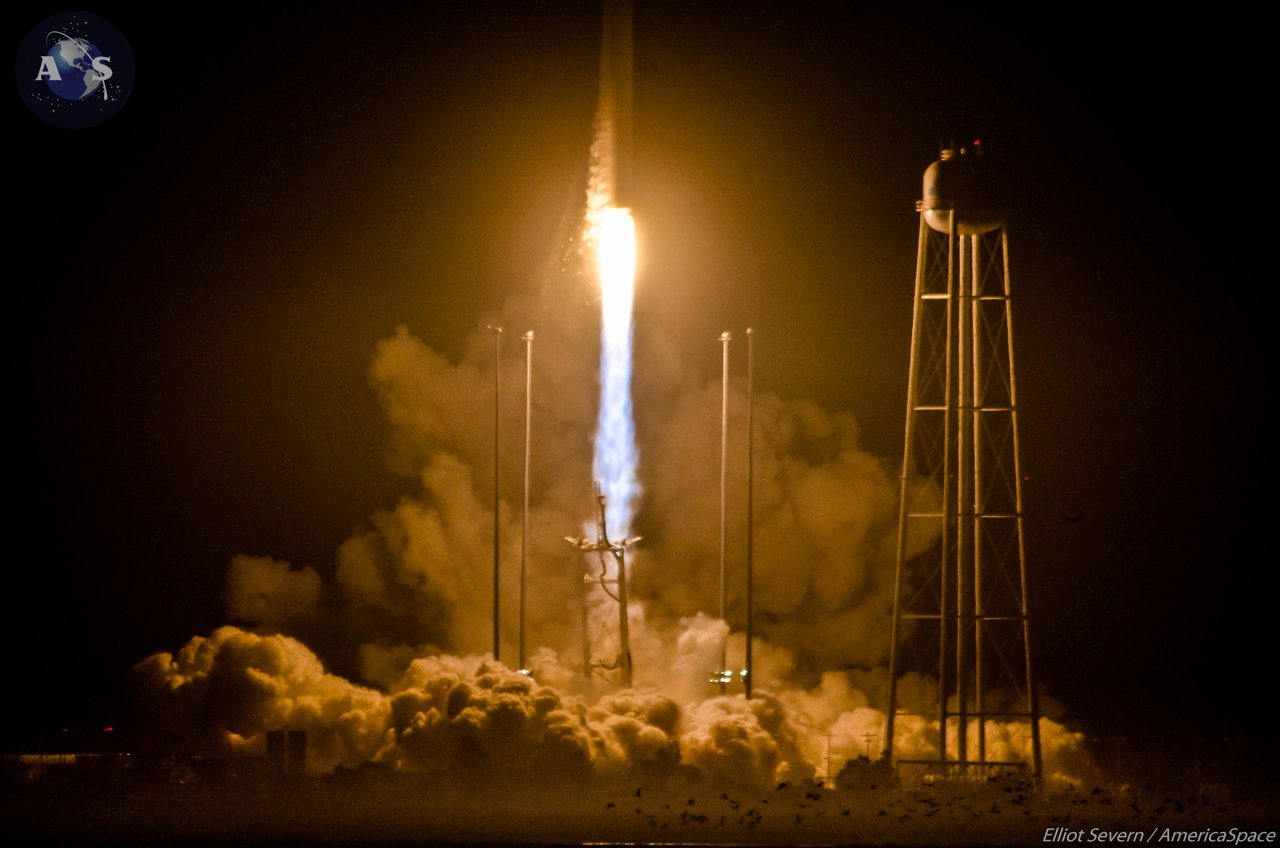
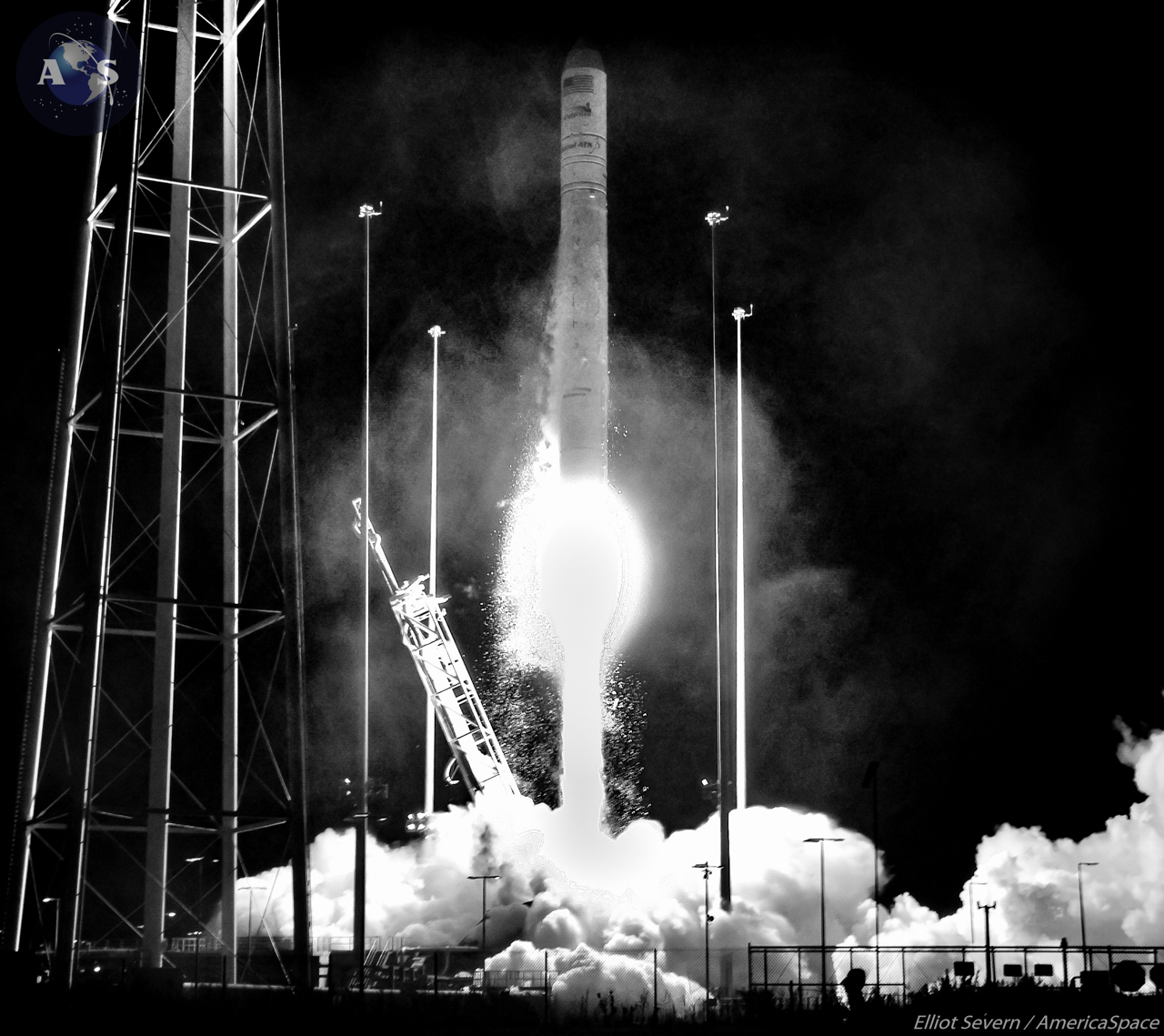
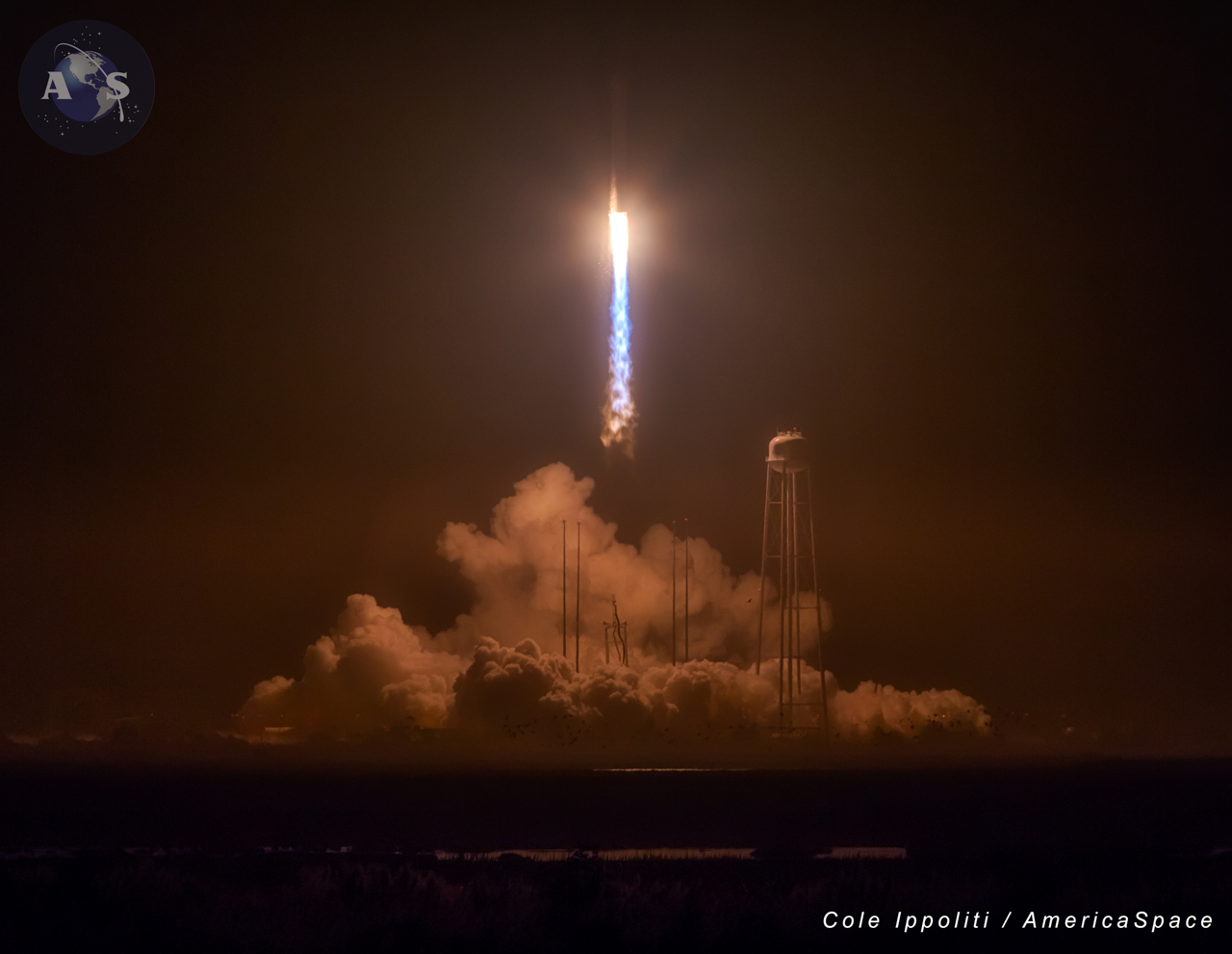

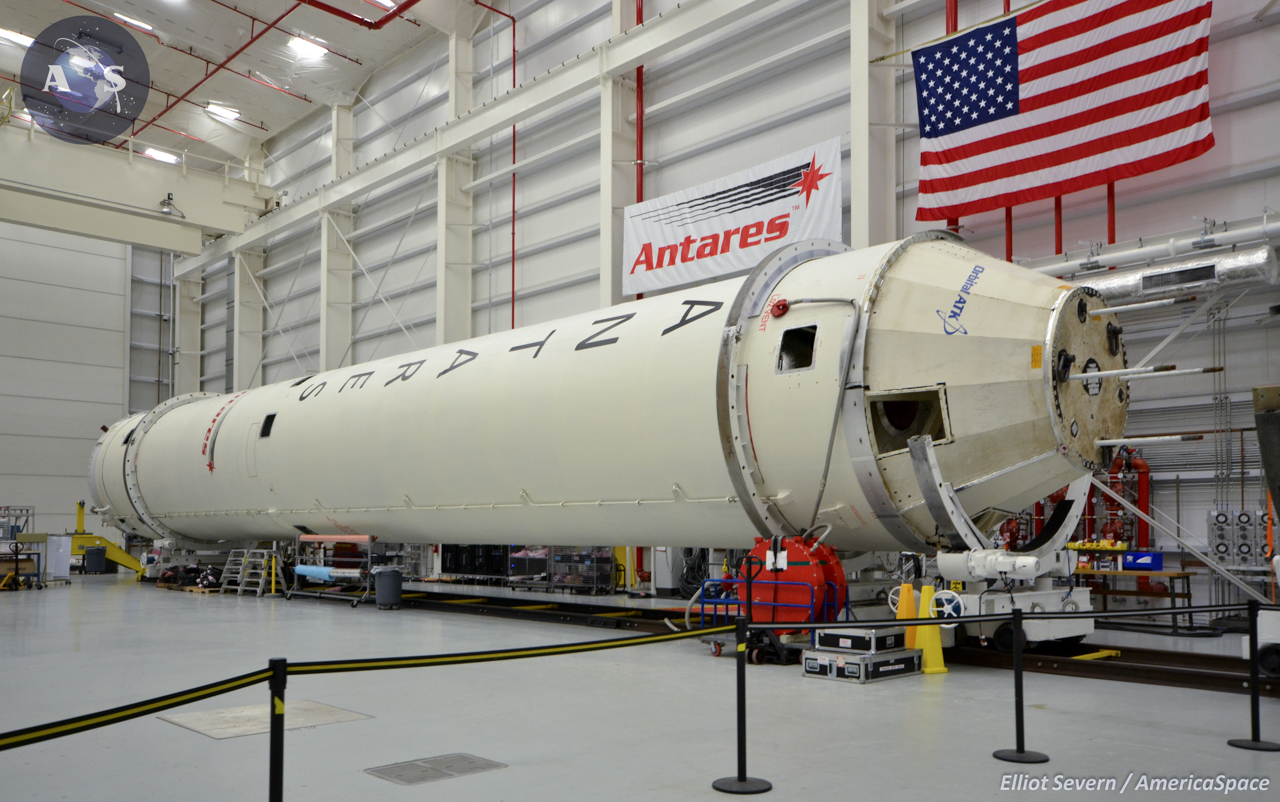






Thank you Elliot Severn for the lovely Antares visual update!
Why do I love imagining a potential future 8.4 meter diameter kerolox Antares X with four SRBs from the SLS?
Oh, I figured it out! We’re headed back to the Moon to do ISRU and lots of reliable super heavy launchers would be useful!